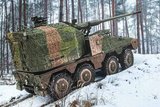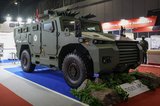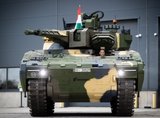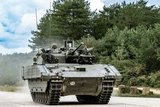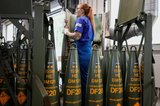Russia's Central MD unit receives Aistyonok system
The Russian Army Central Military District's (MD) 90th Tank Division in Ural has deployed the portable Aistyonok radar reconnaissance and fire control system, the Russian Ministry of Defence (MoD) announced on 16 January.
According to the Russian MoD, the new equipment can monitor trajectories of projectiles automatically and locate impact points. The radar also provides fire control and enemy fire location at distances of up to15km.
This fire control unit is designed to improve the accuracy of missile and artillery strikes and reduce the consumption of ammunition.
In December 2017, SNAR-10M1 self-propelled radar stations went into service with artillery subunits of the division. These stations are intended forthe reconnaissance of moving ground, air and surface targets and can detect enemy equipment at ranges of up to 40km.
More from Land Warfare
-
![Still no clarity on the future of the British Army’s new wheeled artillery system]()
Still no clarity on the future of the British Army’s new wheeled artillery system
The UK donated its AS90 155mm/39cal tracked self-propelled howitzers to Ukraine ahead of planned retirement and bought Archer platforms to fill the gap. Eventually RCH 155s were ordered but the procurement effort remains under a cloud.
-
![More details of Indonesia’s Celeris-based 4x4 emerge as customer hunt begins]()
More details of Indonesia’s Celeris-based 4x4 emerge as customer hunt begins
The Texelis Celeris builds on the rolling chassis of the Serval 4×4 lightweight multi-role armoured vehicle which is being built by Texelis and Krauss-Maffei Wegmann Nexter Defence Systems (KNDS France).
-
![KF41 Lynx finds a path but hurdles remain]()
KF41 Lynx finds a path but hurdles remain
The Lynx is typically configured as an IFV operated by a crew of three and with space for up to eight dismounts in the rear troop compartment. The platform is being delivered to Hungary, has been contracted for Italy and will soon be in Ukrainian hands in small numbers.
-
![Analysis: British Army Ajax in service after problematic delivery – but what now?]()
Analysis: British Army Ajax in service after problematic delivery – but what now?
The Ajax has finally rolled into place and achieved what the UK Ministry of Defence describes as Initial Operating Capability. With the production line for UK contracts only going to the end of the decade, what’s next?
-
![Rheinmetall looks to international partners as its sales grow]()
Rheinmetall looks to international partners as its sales grow
Rheinmetall has been riding high for several years as countries look to buy artillery and budgets boom.









